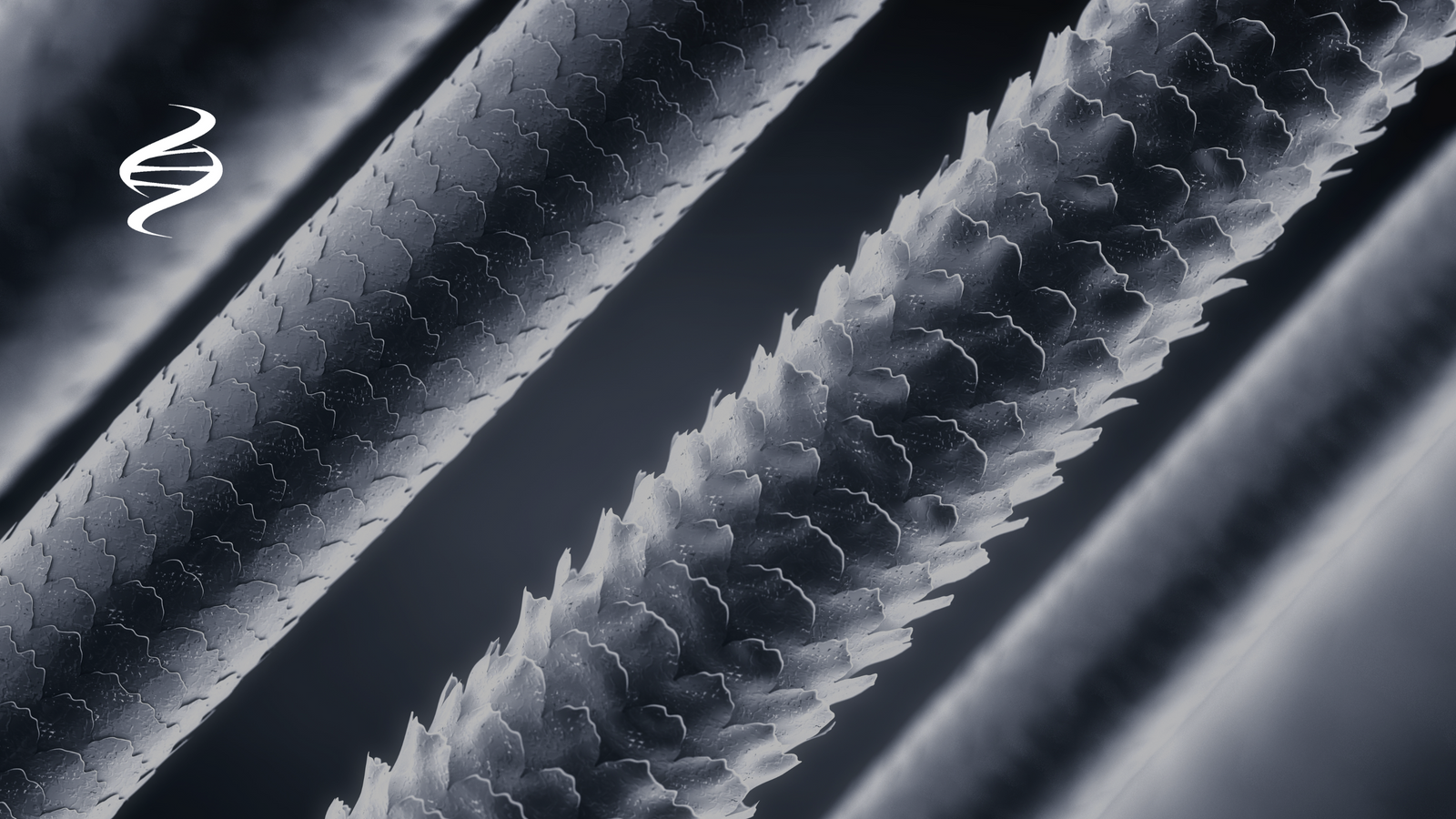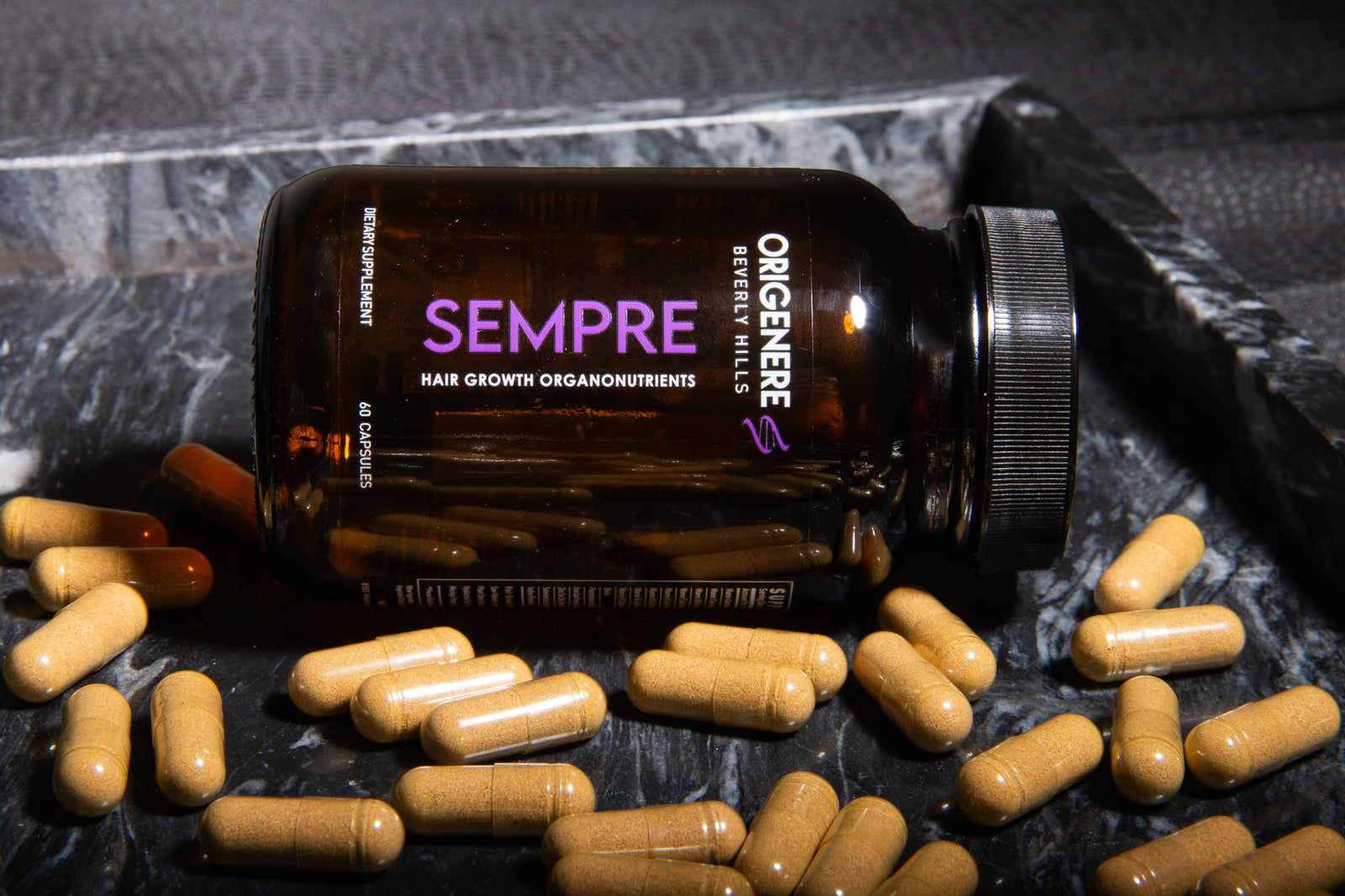
Introduction to Hair and Scalp Anatomy and Physiology
Welcome to Origenere’s hair growth series!
We are dedicated to all-natural hair and skincare products, we believe it's essential to understand the anatomy and physiology of your hair and scalp. This blog covers the basic structure of hair, the importance of scalp health, and the functions of hair in humans.
The Structure of Hair
Hair is not just a statement of style but a complex structure with various parts playing critical roles in its growth, appearance, and health. Hair is composed of three main parts: the shaft, root, and follicle.
- Hair Shaft: The part of the hair that is visible above the skin. It's composed of three layers: the cuticle (outer layer), cortex (middle layer containing melanin), and, in some cases, the medulla (central core). The hair shaft is what we see, touch, and style. Its health reflects our overall hair care regime. It consists primarily of keratin, a tough protein that provides strength and flexibility.
- Hair Root: This part lies below the surface of the skin, anchoring the hair into the scalp. It's housed in a small tube called the follicle.
- Hair Follicle: The living part of the hair, located in the dermis of the scalp. The follicle is where the hair starts its life cycle. It's a complex structure that contains the hair bulb at its base, which contains stem cells and absorbs nutrients. The stem cells are crucial for the regeneration and growth of the hair follicle. They are responsible for initiating the hair growth cycle, repairing the follicle, and contributing to the formation of new hair shafts. These cells can differentiate into various cell types needed for hair growth and follicle development.

Scalp Anatomy and Hair Health
The scalp is more than just skin that covers the head. It's a vital part of hair anatomy that plays a crucial role in maintaining healthy hair. It contains numerous blood vessels, nerves, and sebaceous glands that secrete sebum, a natural oil that lubricates and protects the hair and scalp. A healthy scalp is essential for optimal hair growth, as it provides the necessary nutrients and moisture to the hair follicles.
- Skin Layers: The scalp consists of three layers - the epidermis (outer layer), dermis (middle layer containing hair follicles and sweat glands), and hypodermis (deepest layer containing fat and connective tissue).
- Blood Supply: The scalp has a rich blood supply that provides oxygen and nutrients to the hair follicles, essential for hair growth and health.
- Sebaceous Glands: These glands secrete sebum, an oily substance that helps moisturize and protect both the hair and scalp.

Functions of Hair in Humans
Hair serves several functions beyond the aesthetic, highlighting its importance in various physiological and social contexts:
- Social and Psychological Significance: Throughout history, hair has played a significant role in social identity, gender, and status, impacting individuals' self-esteem and social perceptions.
- Protection: Hair helps protect the scalp from UV radiation, mechanical damage, and extreme temperatures. Eyelashes and eyebrows protect the eyes from dust and sweat.
- Sensory input: Hair follicles are associated with nerve endings, making them sensitive to touch, which helps detect and respond to environmental changes.
- Thermoregulation: Hair traps air to insulate the body, keeping us warm. It also aids in the evaporation of sweat from the skin, helping to cool the body.
Understanding the anatomy and physiology of hair and scalp is crucial for effective hair care. For example, Saw palmetto is thought to inhibit the action of 5-alpha reductase, an enzyme that converts testosterone into dihydrotestosterone (DHT). DHT is a hormone associated with hair loss, especially in cases of androgenetic alopecia (pattern hair loss). By potentially reducing DHT levels, saw palmetto might help prevent the miniaturization of hair follicles, a process in which follicles become smaller and produce thinner, shorter, and less pigmented hair over time.
You can find saw palmetto in our Naturale Shampoo, Conditioner, Hair Tonic and Hair Cream.
By appreciating the complexity of hair growth and maintaining scalp health, we can better address hair concerns. Stay tuned as we explore the science behind hair growth and health to unlock the power of your DNA.
Note: This post is intended for educational purposes and should not replace professional medical advice.

References
- Schneider, M. R., Schmidt-Ullrich, R., & Paus, R. (2009). The hair follicle as a dynamic miniorgan. Current Biology, 19(3), R132-R142. https://doi.org/10.1016/j.cub.2008.12.005
- Bhushan, B. (2010). Biophysics of human hair: structural, nanomechanical, and nanotribological studies. Springer Science & Business Media. https://doi.org/10.1007/978-3-642-15901-5
- Murphrey, M. B., Agarwal, S., & Zito, P. M. (2021). Anatomy, hair. StatPearls Publishing. https://www.ncbi.nlm.nih.gov/books/NBK513312/
- Trüeb, R. M. (2015). The difficult hair loss patient: a particular challenge. International Journal of Trichology, 7(3), 71-75. https://doi.org/10.4103/0974-7753.167465
- Jablonski, N. G., & Chaplin, G. (2014). The evolution of skin pigmentation and hair texture in people of African ancestry. Dermatologic Clinics, 32(2), 113-121. https://doi.org/10.1016/j.det.2013.11.003
- Paus, R., & Cotsarelis, G. (1999). The biology of hair follicles. New England Journal of Medicine, 341(7), 491-497. https://doi.org/10.1056/NEJM199908123410706
- Romanovsky, A. A. (2014). Skin temperature: its role in thermoregulation. Acta Physiologica, 210(3), 498-507. https://doi.org/10.1111/apha.12231
- Harkey, M.R. (1993). Anatomy and physiology of hair. Forensic Science International.
- Hoover E, Alhajj M, Flores JL. Physiology, Hair. [Updated 2023 Jul 30]. In: StatPearls [Internet]. Treasure Island (FL): StatPearls Publishing; 2024 Jan-. Available from: https://www.ncbi.nlm.nih.gov/books/NBK499948/
- Tajran J, Gosman AA. Anatomy, Head and Neck, Scalp. [Updated 2023 Jul 24]. In: StatPearls [Internet]. Treasure Island (FL): StatPearls Publishing; 2024 Jan-. Available from: https://www.ncbi.nlm.nih.gov/books/NBK551565/




